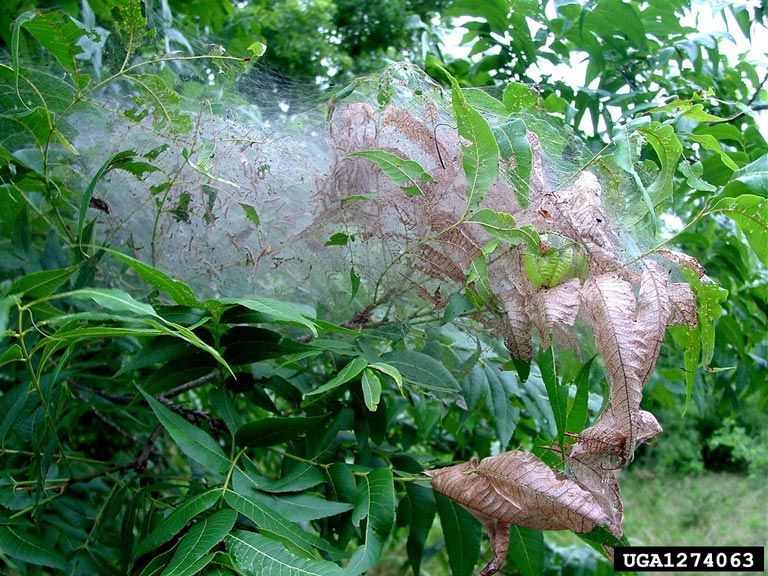
Have you seen big webs in the trees lately? If you haven’t, you will soon.
These are the communal homes of fall webworm caterpillars, the larvae of the fall webworm moth (Hyphantria cunea).
Each colony hatched from an inconspicuous egg mass, then the caterpillars built a web to protect themselves from predators. As they grow they expand their web.
Because this is the end of the growing season, the webs usually don’t hurt the trees. Meanwhile the caterpillars are tasty treats for migrating songbirds.
See the handsome adult moth and learn more about the caterpillars in this 2011 article: Coming Soon To A Tree Near You
(photo by Ronald F. Billings, Texas A&M Forest Service , Bugwood.org)
More commonly (in central PA) these nests are gypsy moth which are detrimental to trees and birds. When I see these nests on my trees I cut and burn the branches with no hesitation.
Nick, no these are not gypsy moths. They really are fall webworms. “Gypsy moth caterpillars do not make silken webs or tents.” Quoted from this article about gypsy moths at Univ of Massachusetts Amherst’s Center for Agriculture Food and the Environment
Though the caterpillars are unsightly they are food for birds.
Wow, you are right. This must be a common misconception then because I know I am not the only one that thought that. Thank you for the information.